Colin McCrate's Blog, page 8
June 22, 2019
Episode 107: Harvesting For Quality and Production with Colin McCrate

Nantes carrots
Learning proper harvest timing and technique can help increase yields and ensure you get the best tasting produce from your garden. In this episode, Hilary and Colin talk harvesting methodology. They break down the techniques into five categories to help you make the most of your bounty.
HOW TO LISTEN:Subscribe in iTunes , Stitcher, or any of your favorite podcast players to have new episodes sent directly to your device.
Listen right now in your browser by clicking above.


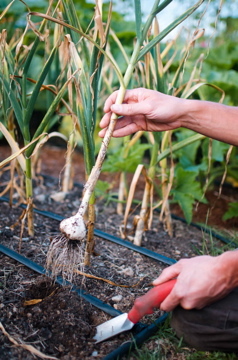
SHOW NOTES and TERMS:
The Five General Harvesting Methods for Annual Crops:
Cut and come again:
Baby salad greens
Cilantro
Herbs such as: Parsley*, Chives*, Oregano*, Thyme*
Leaf harvesting
Kale
Chard
Collards
Pinching
Basil
Branching flowers such as sweet peas, stock and zinnias
Pulling the entire plant
Carrots
Beets
Kohlrabi
Bulbing onions
Garlic
Head lettuce/Radicchio
Cabbage
Fennel
Picking individual fruit
Picking to increase production
Snap peas
Snap beans
Tomatoes
Tomatillos
Peppers
Eggplant
Picking once plant has died back
Winter squash
Legumes for drying
*Not technically annual crops



The following shows a season-long crop rotation for 1/2 of a 4x8’ raised bed. In the first image, the bed is planted in garlic and spring bulbling alliums. In the second image they’ve been harvested and the space has been re-seeded in beets and bush beans. The third image show’s the mature beets and bush beans.
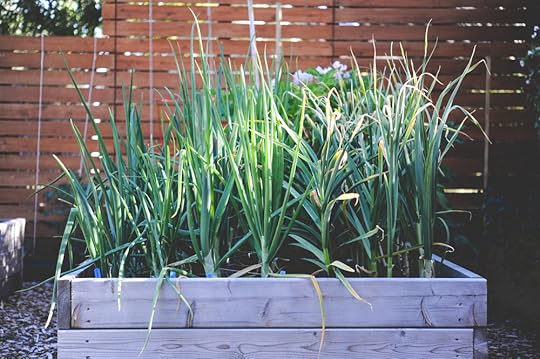


Books By Colin McCrate: (Check out Food Grown Right, In Your Backyard for detailed harvesting instructions)
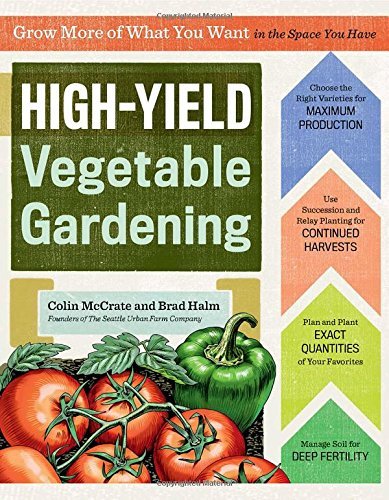
By Colin McCrate, Brad Halm
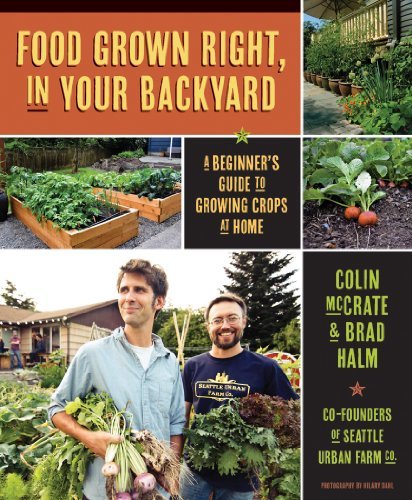
By Colin McCrate, Brad Halm
Or, check out Sarah’s comprehensive harvesting webinar here: Reaping The Rewards: Harvesting Techniques For Quality And Production
Like what you hear? Please share our podcast with a friend. Subscribe on iTunes or your favorite podcast player so you never miss a beat. And we'd really appreciate you showing us some love by leaving a rating and review on iTunes.
Have a topic you'd like see us dig in to? Leave us a note in the comment section below or #EBpodcast on Instagram and Twitter!
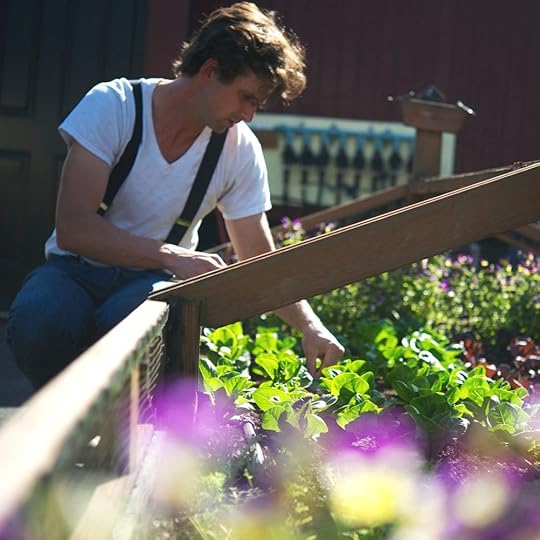
More about this weeks guest expert:
Colin McCrate is the founder of the Seattle Urban Farm Co. He has been growing food organically for over 15 years and has designed and has managed projects ranging from multi-acre farms to small backyard gardens. The author of two books; Food Grown Right, In Your Backyard (Mountaineers Books, 2012) and The High-Yield Garden Planner (Storey Publishing, 2015); and the Seattle Times garden writer. He believes that urban food production can help increase public awareness of environmental, health, and social issues.
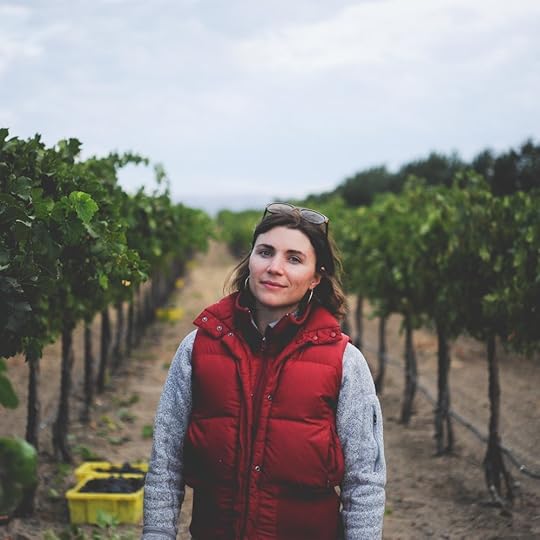
About the Host:
Hello, I’m Hilary Dahl. Outside of this podcast, my job is to help beginning and experienced growers create beautiful and productive gardens. I have the unique experience of working in on a wide range of projects, from small backyard garden plots to multi-acre vegetable farms. I also work in my own garden every day when I get home. This podcast is an opportunity to discuss seasonal garden topics and share the the joy of growing your own food.
June 9, 2019
Episode 106: Vegetable Gardening Wisdom with Kelly Smith Trimble
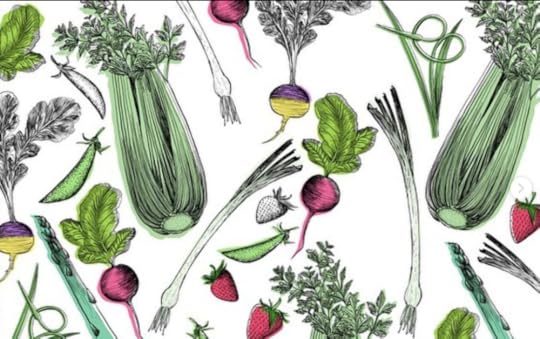
Illustration by Harriet Popham from Vegetable Gardening Wisdom: Daily Advice and Inspiration for Getting the Most from Your Garden.
Hilary and Kelly Smith Trimble discuss Kelly's new book, Vegetable Gardening Wisdom; and share simple words of advice and practical inspiration for getting most out of your vegetable garden!
HOW TO LISTEN:
Listen right now in your browser by clicking above.
Subscribe in iTunes (or your favorite podcast player) to have our podcasts sent directly to your device.
SHOW NOTES:Featured Quotes and Words of Wisdom From Kelly’s Book, Vegetable Gardening Wisdom: Daily Advice and Inspiration for Getting the Most from Your Garden .
“Folk wisdom has it that a poor gardener grows weeds, a good gardener grows vegetables, and a very good gardener grows soil.” - Edward C Smith, The Vegetable Gardeners Bible
The health of your garden is largely dependent on the heath of your soil. Biological diversity makes healthy soil, so think of your garden soil as a mini eco-system that’s at it’s healthiest when populated by many different insects and microorganisms that keep each other in balance.
If cared for properly, the health of your soil will improve over time! Follow these simple instructions from our book, Food Grown Right, In Your Backyard, to create a maintain healthy soil in your garden:
Add compost to your soil each year to improve the amount of organic in the soil
Add organic fertilizers to ensure that your plants are getting the nutrients they need
Check your soil’s pH every year
(each of these steps is elaborated on in much more detail in Food Grown Right, In Your Backyard, and in archived articles on this blog!)
“Phenology, the study of weather and it’s effect on plant and animal cycles, looks at climate signs rather than a calendar to determine planting and harvesting dates. For example, phenological wisdom suggests sowing beets and carrots when dandelions start to bloom and planting potatoes as daffodils flower.” - Kelly Smith Trimble, Vegetable Gardening Wisdom
I LOVE this quote because it encourages gardeners to tune into their surroundings and empowers them to make their own choices when it comes to timing in the garden. Phenological wisdom will be unique for every growing region.
“The garden is a lot like a puppy: it needs care and attention every day. And like a puppy, it pays you back with endless rewards, the kiss of bloom on fruit, the sweet fullness of fresh pea.” - Deborah Madison, Vegetable Literacy
If you’re a regular listener of the podcast or reader of this blog it should come as no surprise that I included this quote. I truly believe that gardens located in a site thats easy to access and in full-view of their owners are much more successful that those sited out of the way.
I also believe that taking 5-15 minutes to look at your garden each day will greatly improve the success of your project. This daily check-in provides you with the opportunity to catch issues such as water stress, and pests and diseases quickly so that you can avoid larger disasters.
“After compost itself, mulches in general are the subject most actively boring to the organic gardener’s friends.”- Eleanor Perenyi, Green Thoughts
How To Make Your Own Powdered Greens:
Dehydrate your green 2nd’s (bolting plants, leaves with bug holes, etc.) or bumper crops and grind them into a powder using a blender, cuisinart, or mortar and pestle. Store in an airtight container..
A few pages from Kelly’s beautiful book:
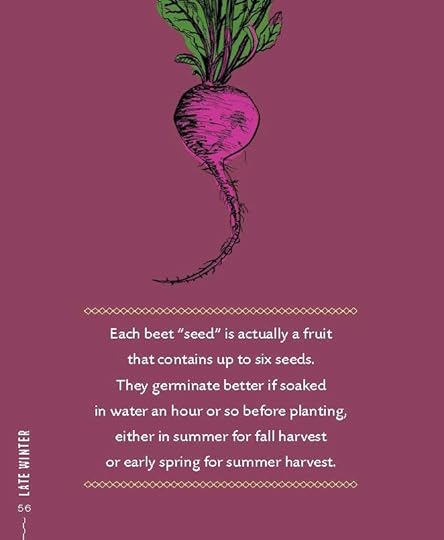
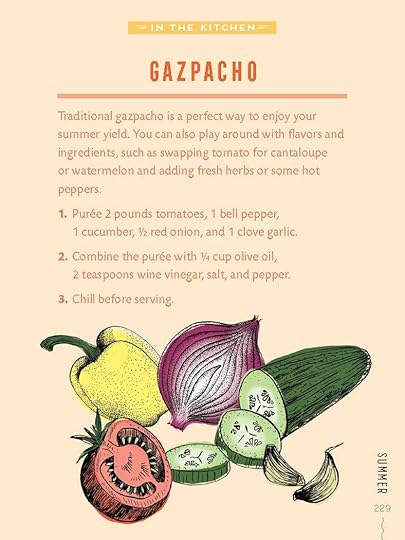

Resources mentioned in this episode:
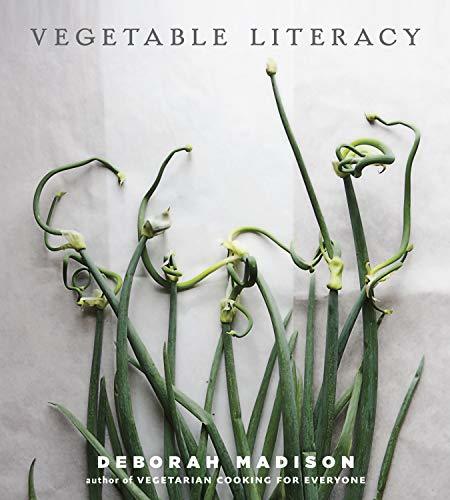

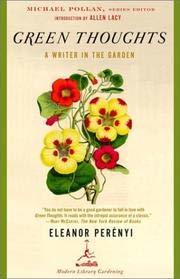

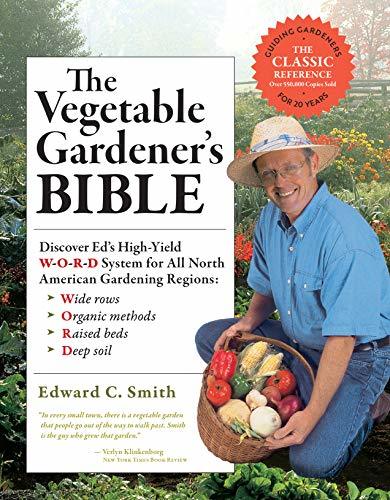
Like what you hear? Please share our podcast with a friend. Subscribe on iTunes or your favorite podcast player so you never miss a beat. And we'd really appreciate you showing us some love by leaving a rating and review on iTunes.
Have a topic you'd like see us dig in to? Leave us a note in the comment section below or #EBpodcast on Instagram and Twitter!

photo by Alisha Bube
This Week’s Co-host:
KELLY SMITH TRIMBLE is an editor, writer, and gardener living in Knoxville, Tennessee. Her book Vegetable Gardening Wisdom, a collection of seasonal advice and inspiration for edible gardeners, was released in April 2019. Kelly is currently the digital editorial director for HGTV and Travel Channel, and she has also been a writer and editor for Southern Living, Bonnie Plants, the National Park Foundation, and other media outlets and organizations. She earned a B.A. in English with concentration in Environmental Studies from Sewanee: The University of the South, and an M.S. in Environmental Studies with an emphasis in Writing and Communications from Green Mountain College. She is a certified master gardener who grows, cooks, and preserves at her suburban home alongside her husband, Derek, and dog, Rufus. They also love hiking, backpacking, and kayaking.
Website: kellysmithtrimble.com
Instagram: @kellysmithtrimble
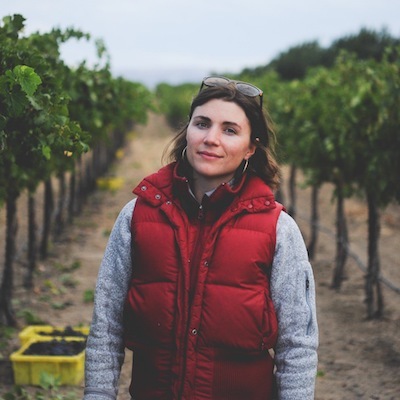
About the Host:
Hello, I’m Hilary Dahl. Outside of this podcast, my job is to help beginning and experienced growers create beautiful and productive gardens. I have the unique experience of working in on a wide range of projects, from small backyard garden plots to multi-acre vegetable farms. I also work in my own garden every day when I get home. This podcast is an opportunity to discuss seasonal garden topics and share the the joy of growing your own food.
May 18, 2019
Episode 105: Strawbale Gardening with Craig LeHoullier
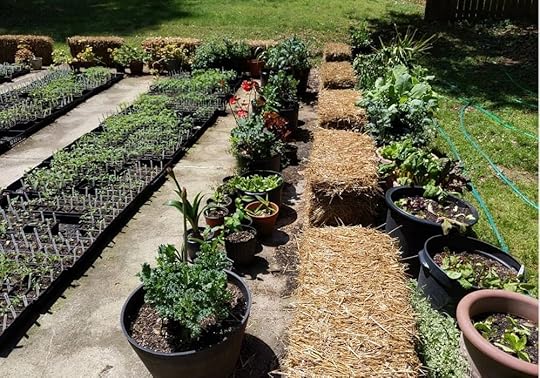
Craig’s spring straw bales and tomato transplants.
Turns out gardening in straw bales might be the least expensive and most effective way to create a season-long container garden! Hilary and Craig LeHoullier discuss what a straw bale garden is and how to set one up!
HOW TO LISTEN:
Listen right now in your browser by clicking above.
Subscribe in iTunes (or your favorite podcast player) to have our podcasts sent directly to your device.
SHOW NOTES and TERMS:Straw Bale Gardening
What it is: The practice of using bales of straw as your container and growing medium
How it works: The straw inside the bale decomposes over the course of the growing season, creating a productive, warm, moist and nutrient rich growing environment for plants.
The benefits:
Straw bales function a lot like a container garden, so you can place your bales anywhere on your site- ideally in the sunniest spot with the best water access!
No digging or filling of containers!
Bales drain well.
High bales = easy harvesting!
Also like in more traditional container garden, the bales lift your plants up out of the ground and.
What you need to build a straw bale garden:
Straw bales
Water
Plants
Nitrogen rich fertilizer - optional, but helpful in speeding up the breakdown of the straw to create a good growing environment for your plants.
Balanced fertilizer to use at planting time.
How far in advance do you need to condition your bales?:
2 weeks if using a nitrogen accelerant
4-6 weeks if just using water
What to do with the bale at the end of the season: If your bale was home to healthy plants, cut the string of your bales and spread them around your garden as mulch or place them in a pile out of the way. The straw will continue to break down over the winter and eventually become compost that you can use the following season!
For step by step instructions on building and caring for your straw bale garden, check out Craigs book: Growing Vegetables in Straw Bales
The Dwarf Tomato Project
About the project: [From Craigs website] “Dwarf varieties, prior to this project, are relatively rare, unknown and undeveloped as a group. Appearing quite distinct in all growth phases – from seeding to mature plant – they behave as if they are very compact indeterminate varieties in the manner that they fruit, persevere until frost, and exhibit flavors that in many cases can approach the best of the indeterminate varieties, due to similar foliage to fruit ratios. There is some variation in height throughout the new dwarf varieties – some appearing to be more “determinate” than others. As young seedlings they are half the size of indeterminate or determinate seedlings right from the start. The central growing stem is particularly stout, and the foliage, which can be either regular or potato leaf, tends to be a darker bluish green and have a puckered, wrinkled characteristic that is known as “rugose”. Though the yields of dwarfs will never approach that of indeterminate varieties, the ability to plant them much more closely or grow in as little as 5 gallon pots are adequate compensation. What we are producing in this project is a color, size and shape range that will allow those who are space constrained to experience the nature of many of the well known heirloom types, but in a growth habit that is much easier to manage. We are excited about what we are creating, and are anxious, as well as finally ready, to share the very best of these with gardeners. We invite feedback – there is always a chance that you will not get exactly what is described or expected, and all of these, while quite stable, are still in a way works in progress. We hope to have created a set of non-hybrid varieties that will make gardening interesting for you, as well as provide what will be considered valuable heirloom varieties at some point in the distant future!”
Find our more about this project and reach out to Craig about joining in on the fun here.
Photos from Craig’s Straw Bale Garden
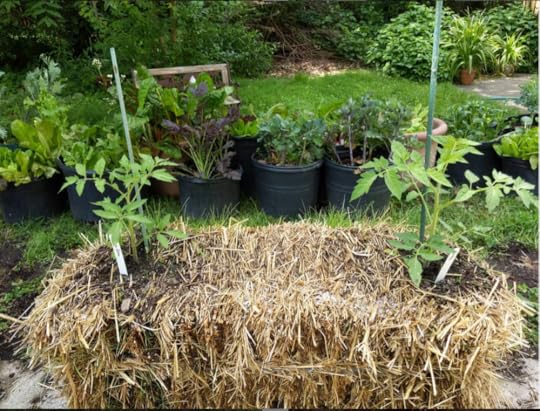


Resources mentioned in this episode:

Growing Vegetables in Straw Bales: Easy Planting, Less Weeding, Early Harvests. A Storey BASICS® Title

Epic Tomatoes: How to Select and Grow the Best Varieties of All Time
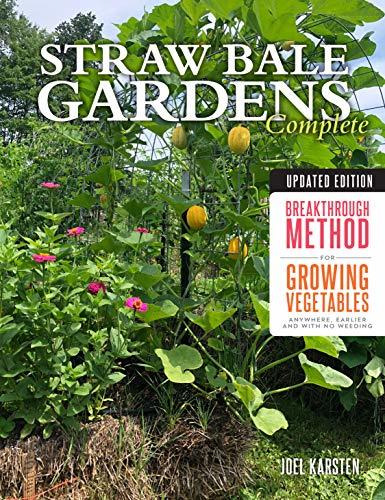
Straw Bale Gardens Complete, Updated Edition: Breakthrough Method for Growing Vegetables Anywhere, Earlier and with No Weeding

Espoma PT18 Plant Tone, 18-Pound
Like what you hear? Please share our podcast with a friend. Subscribe on iTunes or your favorite podcast player so you never miss a beat. And we'd really appreciate you showing us some love by leaving a rating and review on iTunes.
Have a topic you'd like see us dig in to? Leave us a note in the comment section below or #EBpodcast on Instagram and Twitter!
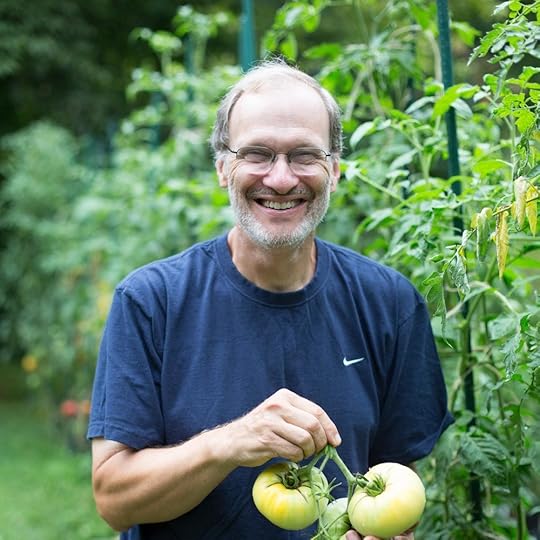
This Week’s Co-host:
CRAIG LEHOULLIER aka. NC Tomatoman aka “The Fellow Who Named Cherokee Purple in 1990” is the author of the books Epic Tomatoes or Growing Vegetables in Straw Bales, the co-host of Tomatopalooza, a co-leader of the Dwarf Tomato Breeding Project, or just the odd person with a garden where the driveway used to be. He’s the tomato nut with a website, a blog, a newsletter (on occasion), and a huge tomato and pepper and eggplant collection.
Website: www.craiglehoullier.com/
Instagram: @nctomatoman

About the Host:
Hello, I’m Hilary Dahl. Outside of this podcast, my job is to help beginning and experienced growers create beautiful and productive gardens. I have the unique experience of working in on a wide range of projects, from small backyard garden plots to multi-acre vegetable farms. I also work in my own garden every day when I get home. This podcast is an opportunity to discuss seasonal garden topics and share the the joy of growing your own food.
May 14, 2019
The Beet Round-up

Harvested Early Wonder Beets
By reader/listener request, we’ve pulled together all of our beet-growing resources for easy reference!
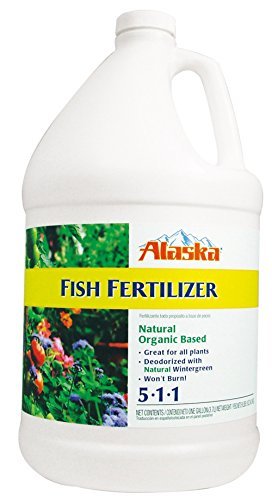
Alaska Fish Emulsion Fertilizer 5-1-1 Concentrate 1 Gallon

Nisaku NJP650 Hori-Hori Weeding & Digging Knife, Authentic Tomita (Est. 1960) Japanese Stainless Steel, 7.25" Blade, Wood Handle

Dr. Earth Organic 5 Tomato, Vegetable & Herb Fertilizer Poly Bag
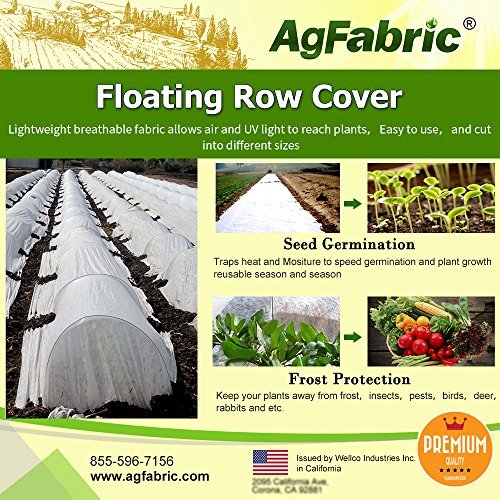
Agfabric Warm Worth Floating Row Cover & Plant Blanket, 0.55oz Fabric of 5x25ft for Frost Protection, Harsh Weather Resistance& Seed Germination
May 10, 2019
Re-release: Encyclopedia Botanica Podcast: Episode 42: Growing Tomatoes
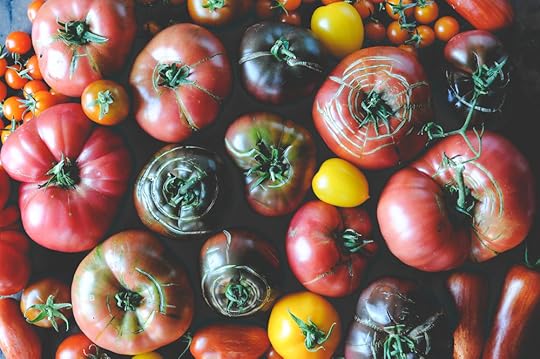
Tomatoes are probably the most popular garden vegetable, and for good reason; they're versatile, highly productive, and produce fruits that are far superior to any you can buy at the grocery store.
HOW TO LISTEN:
Listen right now in your browser by clicking above.
Subscribe in iTunes (or your favorite podcast player) to have our podcasts sent directly to your device.
SHOW NOTES:In this episode, we discuss:
How to choose the best tomato for your space and needs
Tomato planting tips
Some of our favorite tomato varieties
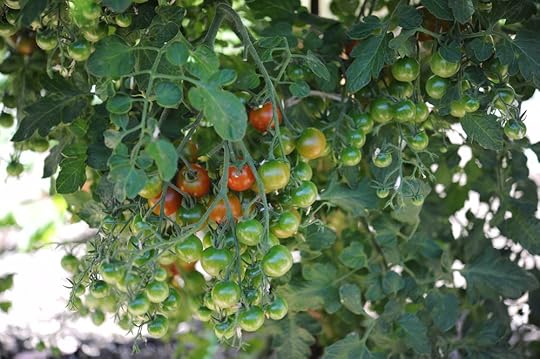

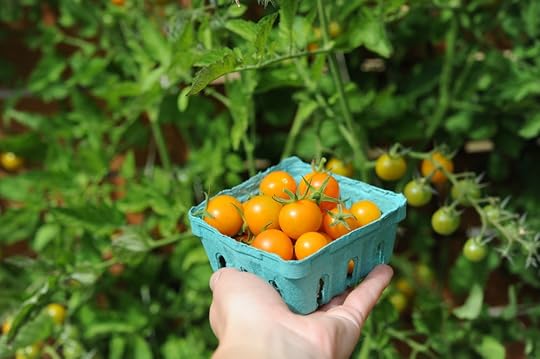

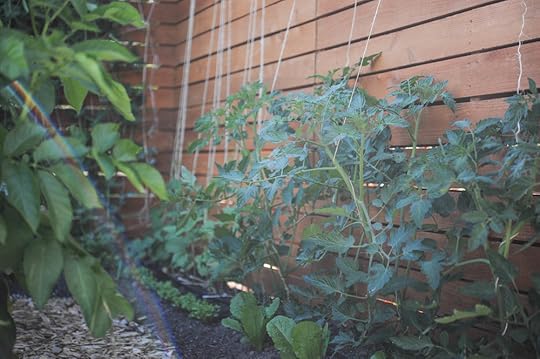
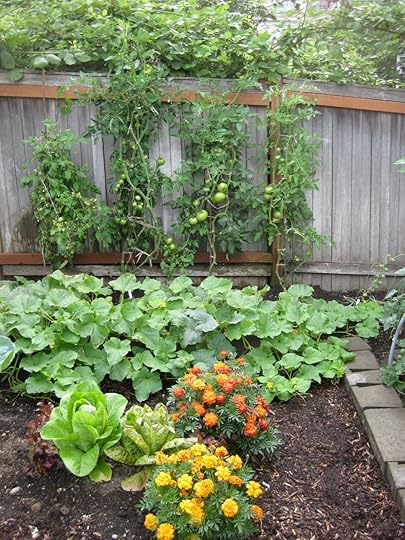
Important Take-aways:
There are two main types of tomato plants you can grow. Determinate and indeterminate:
Determinate tomatoes grow to a certain height, then flower and set fruit. Traditionally, many determinate types were Roma and plum varieties, but now you can find tomato plants that will produce fruit in all shapes, sizes and colors that have been bred to be determinate. Determinate types are great for growing in containers and small spaces.
Indeterminate tomatoes, which will continue to grow larger and larger throughout the season and continue to set fruit for as long as they can before a frost sets in.
Choosing the best types of tomatoes for you and your garden can feel overwhelming. I'm going to go over some of the main categories of tomatoes to help you begin to narrow down your choices:
Cherry and Grape varieties are the small, very sweet tomatoes that are usually eaten whole.
Plum and Roma are medium sized fruit that are usually an oblong shape and are used for sauces and canning because of their low-moisture content, meaty texture, and low seed count.
Slicing and Beefsteak are the large, juicy tomatoes used for slicing on sandwiches, caprese salad, etc.
When planting tomatoes, it's crucial to start with large, healthy transplants. By large, I mean 6-8 inches tall. If you're growing in a cooler region, planting out transplant that are even larger than that can be helpful.
Tomato plants should be spaced at least 18 inches apart.
To plant tomatoes:
Pull off the lowest side branches and the bottom set of leaves on your plants (these are usually small little leaves that are coming straight off the central stem).
Dig a hole deep enough for your plant to be buried up to the next lowest set of leaves. Mix in ¼ cup of balanced fertilizer and a little extra blood meal if the leaves on your plants are yellowing at all.
Place your plant in the hole, burying the bottom of the central stem. Tomatoes set new roots straight off of their stem so planting them nice and deep will give them the opportunity to develop a large root structure, which will help the plant absorb water and nutrients.
Tomato yield is variable but you'll likely harvest 3-10 lbs per plant.
In many regions it's good to be aware of the fact that tomatoes are a long season crop. They'll be in the garden for about 6 months, but will probably only produce fruit for 3 of those months, and in some years maybe only 2. This means that you may get a really big flush of fruit at some point late in the season. This sounds like heaven, but we've found that many of our clients can get overwhelmed with the amount of fruit that is coming off of their plants late in the summer. Just be aware of this and have a plan.
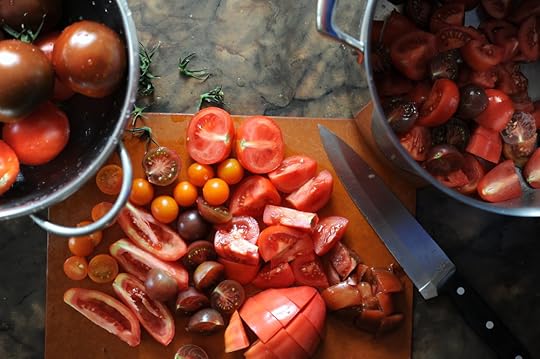
Like what you hear? Please share our podcast with a friend. Subscribe on iTunes or your favorite podcast player so you never miss a beat. And we'd really appreciate you showing us some love by leaving a rating and review on iTunes.
Have a topic you'd like see us dig in to? Leave us a note in the comment section below or #EBpodcast on Instagram and Twitter!

This Week’s Co-host:
KELLIE PHELAN believes that lasting change starts at home, and that’s what she aims do to at The Works. She worked for a decade in environmental consulting, first inspired by a “light bulb” moment at 6th grade camp about how long it takes various materials to break down in the environment. A 2012 transplant to Seattle, Kellie is a self-described ole’ timey grandma, spending her free time growing food, experimenting in the kitchen, and DIYing different projects. A natural connector and a self-starter (I mean, who else teaches themselves how to knit from a library book during summer break in high school?!), Kellie is so grateful for this opportunity to lead The Works and be a part of this amazing community.
Website: www.theworksseattle.com
Instagram: @theworks.seattle

About the Host:
Hello, I’m Hilary Dahl. Outside of this podcast, my job is to help beginning and experienced growers create beautiful and productive gardens. I have the unique experience of working in on a wide range of projects, from small backyard garden plots to multi-acre vegetable farms. I also work in my own garden every day when I get home. This podcast is an opportunity to discuss seasonal garden topics and share the the joy of growing your own food.
May 3, 2019
Episode 103: Tomatoes with Emma Biggs
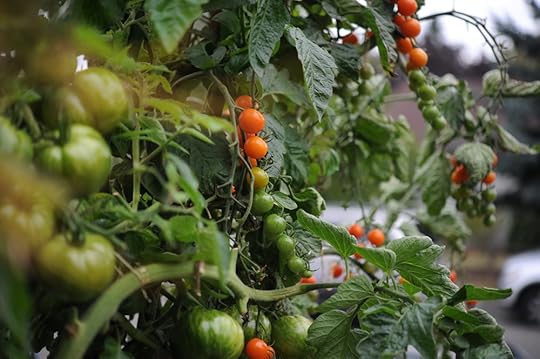
Sungold cherry tomatoes ripening on the vine.
Emma Biggs talks with Hilary about the techniques she uses to grow 133 varieties of tomatoes, from seed to harvest, on her family’s urban lot in Toronto, Canada.
HOW TO LISTEN:Subscribe in iTunes , Stitcher, or any of your favorite podcast players to have new episodes sent directly to your device.
Listen right now in your browser by clicking above.
Photos from Emma’s home garden:



SHOW NOTES + TERMS:
Allelopathy: The release of allelochemicals by certain plants that can affect the growth of other plants
Trellising Methods:
Hanging System: Hanging system is constructed by tying twine to a semi-permanent horizontal support. The twine hangs down vertically from the horizontal support and is tied loosely around the base of the tomato plant (don’t tie your twine too tight around the base of your baby tomato transplants- the stem will likely triple or quadruple in size!). As your tomato grows, wrap the main leader around the twine. This system makes it easy to prune and trellis indeterminate tomatoes because each stem gets a string.
Tomato Cages: Cages can be one of the most accessible ways to trellis tomatoes because they don’t require the grower to be as diligent at training and tying their plants. The cage structure helps to contain the growing tomatoes and prevent broken branches, which can lead to lowered productivity and disease issues. Sounds ideal, right? The problem is I find that indeterminate tomatoes always outgrow most tomato cages. When a tomato plant outgrows it’s cage, the branches tend to flop over the top of the cage and break or scar. This flopped-over growth can also inhibit good air circulation around the plant, and could lead to disease issues such as grey mold or early blight. If you are going to use a cage, use the biggest one you can find. 4-5 feet would be a good minimum.
Tomato Varieties Discussed in This Episode:
‘Yellow Currant’
'Great White Blues’
‘Lebanese Mountain’
‘Bumblebee’ varieties
Check out Emma’s new book: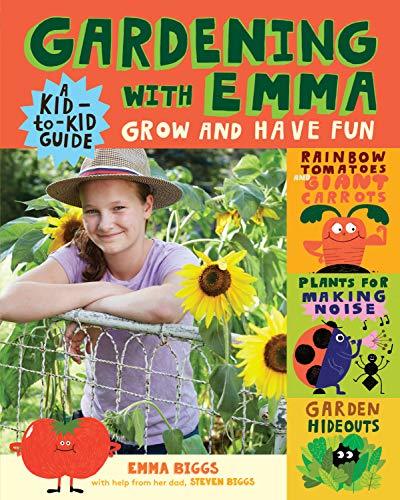
Like what you hear? Please share our podcast with a friend. Subscribe on iTunes or your favorite podcast player so you never miss a beat. And we'd really appreciate you showing us some love by leaving a rating and review on iTunes.
Have a topic you'd like see us dig in to? Leave us a note in the comment section below or #EBpodcast on Instagram and Twitter!
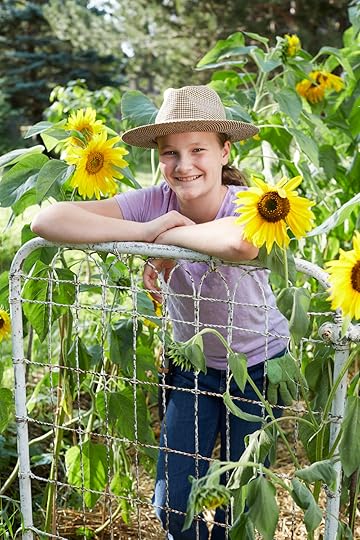
photo by Donna Griffith
More about this weeks guest expert:
EMMA BIGGS is a 14-year-old gardener and garden communicator. Emma raised over 130 tomato varieties in her Toronto garden in 2018—gardening in containers, in straw bales on a driveway, in a neighbor’s yard, in wicking beds under a walnut tree, and on the garage roof. In 2015, at the age of nine, Emma co-authored of Grow Gardeners, Kid-Tested Gardening with Children with her father and started helping him at garden talks and workshops. For the past couple of years, Emma has been giving her own talks at libraries, seed exchanges, garden clubs, and garden shows. Emma is the co-host of The Garage Gardeners Radio Show. She hosts kids gardening videos on the From Dirt to Dishes gardening channel on YouTube. Her latest book, Gardening with Emma, helps kids find the fun in gardening (and helps adults remember how much fun gardening is!).
Website: www.emmabiggs.ca
Instagram: @emmabiggs_grows

About the Host:
Hello, I’m Hilary Dahl. Outside of this podcast, my job is to help beginning and experienced growers create beautiful and productive gardens. I have the unique experience of working in on a wide range of projects, from small backyard garden plots to multi-acre vegetable farms. I also work in my own garden every day when I get home. This podcast is an opportunity to discuss seasonal garden topics and share the the joy of growing your own food.
April 28, 2019
Episode 102: Edible Garden Design with Stefani Bittner
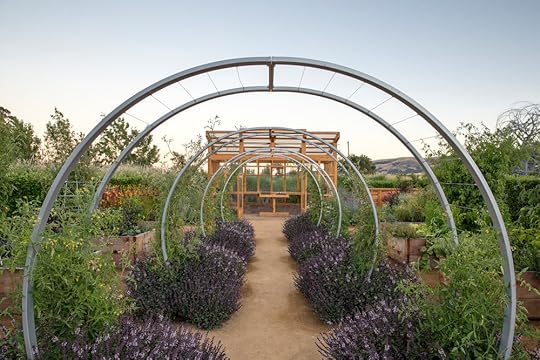
The Sunset Magazine Gardens at The Cornerstone Somona, designed by Stefani Bittner and her team.
Stefani Bittner, owner of Homestead Design Collective, talks with Hilary about how to create a beautiful and productive outdoor living space.
HOW TO LISTEN:Subscribe in iTunes , Stitcher, or any of your favorite podcast players to have new episodes sent directly to your device.
Listen right now in your browser by clicking above.
Photos from Stefani’s home garden:


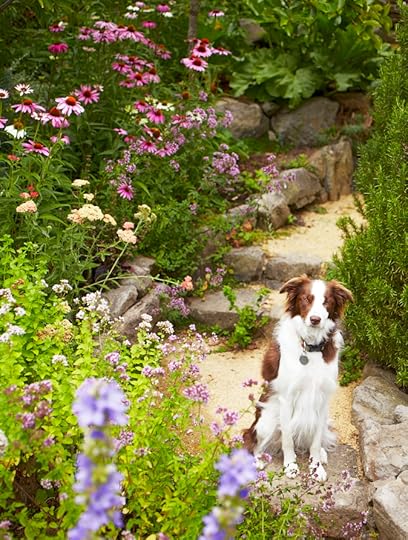
SHOW NOTES + TERMS:
Key Design Elements:
Pick a focal point: Choose a permanent element such as a tree, arbor or pathway to anchor your site
Create a gathering space
Provide structure to your site by incorporating perennial edibles and ornamentals, and evergreen ground covers
Accessibility: It’s likely that your garden will be more successful if you can see it and access it easily.
Repetition: Repeating materials, colors, and textures throughout a landscape can help to integrate a variety of spaces.
Plants Discussed in This Episode:
Pineapple Guava (Feijoa)
Fuyu Persimmion
Blueberry ‘Sunshine Blue’
Huckleberry
Fig
Yarrow
“Our gardens are for living in.”- Stefani BittnerPathway, terracing and trellising inspiration from Stefani’s garden:


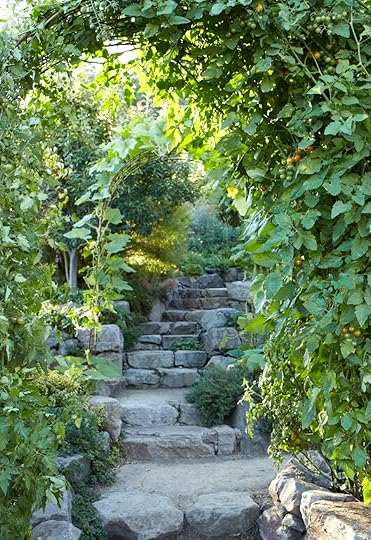
“How do you want to live in your garden?”- Stefani Bittner
Books by Stefani Bittner:
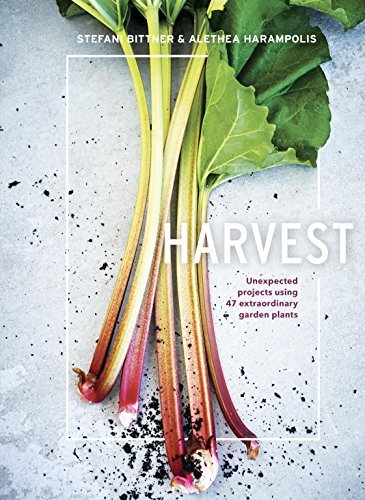
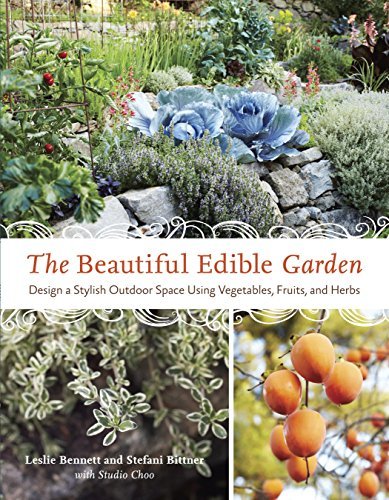
Like what you hear? Please share our podcast with a friend. Subscribe on iTunes or your favorite podcast player so you never miss a beat. And we'd really appreciate you showing us some love by leaving a rating and review on iTunes.
Have a topic you'd like see us dig in to? Leave us a note in the comment section below or #EBpodcast on Instagram and Twitter!

More about this weeks guest expert:
STEFANI BITTNER is the owner of Homestead Design Collective, a San Francisco Bay Area landscape design firm focused on creating beautiful gardens that provide harvest. Stefani is the co-author of The Beautiful Edible Garden and Harvest: Unexpected Projects Using 47 Extraordinary Garden Plants.
Her team offers a unique and sophisticated approach, using both organic farming and fine gardening skills, for people who want help creating aesthetically designed, organic edible gardens. Homestead provides design, installation, and full-service organic maintenance, harvesting, bee keeping, preserving, floristry, and composting services. Homestead is the design team behind the new Test Gardens for Sunset Magazine, the edible garden for Marin Art & Garden Center, and the community garden for Bay Meadows.
Website: homesteaddesigncollective.com
Instagram: @homesteaddesigncollective

About the Host:
Hello, I’m Hilary Dahl. Outside of this podcast, my job is to help beginning and experienced growers create beautiful and productive gardens. I have the unique experience of working in on a wide range of projects, from small backyard garden plots to multi-acre vegetable farms. I also work in my own garden every day when I get home. This podcast is an opportunity to discuss seasonal garden topics and share the the joy of growing your own food.
April 19, 2019
Episode 101: Container Gardening with Sara Gasbarra

Bastille rooftop garden, circa 2015.
In this episode, Sara and Hilary talk about container gardening. Much of Sara’s work is focused on utilizing unused balcony, patio and rooftop space in very urban environments, so this episode focuses on the unique set of needs and challenges that comes along with growing in more unconventional garden space.
HOW TO LISTEN:Subscribe in iTunes , Stitcher, or any of your favorite podcast players to have new episodes sent directly to your device.
Listen right now in your browser by clicking above.
Choose the right size container for the crop you’re growing!
Left to right: Cilantro seeded into a 2 gallon pot, oregano thriving year after year in a 10 gallon pot, and direct-seed salad greens growing in a 5 gallon pot.



SHOW NOTES + TERMS:
Siting your garden:
When creating a vegetable garden of any size, it is importing to choose the right location. Small gardens can be placed in most any site including a deck, patio, driveway, front yard, rooftop or backyard. Three things to consider when looking for the best possible spot for your garden:
You MUST have sun: The most important thing that should dictate your garden’s location is the site’s exposure to direct sunlight. Nearly every fruit and vegetable plant will benefit from getting as much sunlight as possible. It is essential that your garden receives at least 6 hours of sunlight at the height of summer.
Accessibility: Set yourself up for success by setting up your garden so that it’s easy to get to and work in. In a perfect setting, the garden will be highly visible from the house so you see it every day and don’t forget to check up on it!
Consistent watering is key: Aim to place your garden near a water source or a location that is easy to bring water to. Look for your existing outdoor water spigot (check to make sure they work) and figure out the easiest way to deliver water to the garden. You may simply want to use a watering can, or to drag a hose over to the garden and leave it sitting nearby for ease of use. If you are super eager, you can set up a simple timed drip irrigation system for the garden off of the nearest hose bib.
Weight: Saturated potting soil weights around 50lbs/cubic foot. That means that a 4x8 foot raised bed would weigh around 1,600lbs if saturated! Be sure you’re working on a patio, deck or rooftop that can support that weight! When in doubt, consult an engineer.
Wind: If growing in an exposed area, be sure to consider how the wind might effect your garden.
Container material:
Things to consider when purchasing containers or building a bed for the garden:
Not all containers are created equal: It is essential that the soil in your garden stays consistently moist without being too wet or too dry. Some containers dry out more quickly than others. In particular, unglazed ceramic like terracotta can wick moisture out of the soil, necessitating more frequent watering.
Drainage: Some containers are simply designed with undersized drainage holes (or occasionally no holes at all) which can impede or prevent proper water drainage. Consider adding to or expanding the drainage holes in this situation before you set up the garden. If you are building a bed, make sure water can drain freely.
Size: Be sure to choose an appropriate sized pot or container for the plant you’re growing!
Sara’s favorite type of container: Glowpear Self Watering Container
Soil:
Soil depth is crucial: In a small garden, giving plants all the space they want can be challenging. Since you might be planting crops closer together than normal, having containers or beds with deep soil can help tremendously. The soil can’t be too deep, but a minimum of 8” is recommended. Crops will grow much better in 12” or 18” of soil.
Fill the bed or container with the right type of soil: Make sure you read the label! Some potting soils are designed for specific plant types such as cacti or orchids. You want a blend that is suitable for indoor/outdoor vegetable growing. Examine the ingredients listed on the bag. Good vegetable growing soil may have ingredients like chicken manure, peat moss, perlite, kelp meal and worm castings. Avoid potting soils that contain anhydrous ammonium nitrate or phosphoric acid.
Nutrients:
Add organic fertilizers: Even if potting soil contains some organic fertilizers, you will want to add more when planting vegetables. Lack of fertilizer is a very common reason why people have limited success growing vegetables in pots or small garden beds. We recommend adding organic fertilizers to all vegetable plants but this is especially important when it comes to plants that are growing in containers.
All vegetables will benefit from an application of balanced organic fertilizer when planted. As a baseline we recommend ½ cup of balanced organic fertilizer per 5 gallon pot before planting.
A dry fertilizer made up of many different components is called “balanced” or “all-purpose” fertilizer .Ingredients can vary but the nutrient breakdown will show approximately equal amounts of nitrogen (N), phosphorus (P), and potassium (K). Fertilizers with the nutrient breakdowns of 5-5-5, 3-4-4, or 3-2-2 can all be considered balanced.
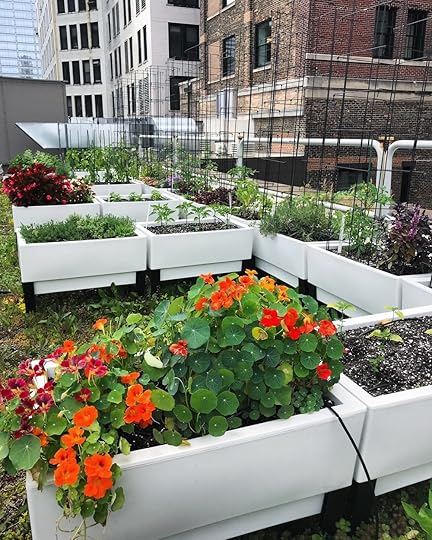
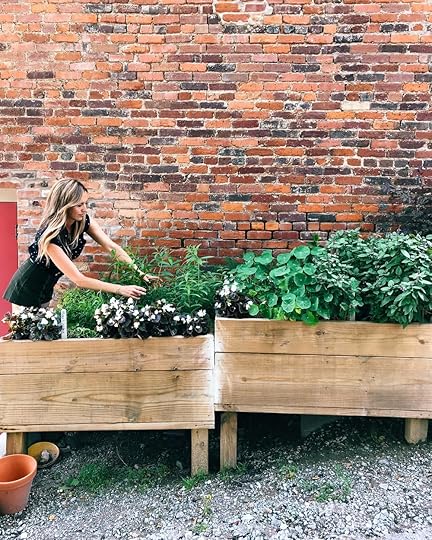

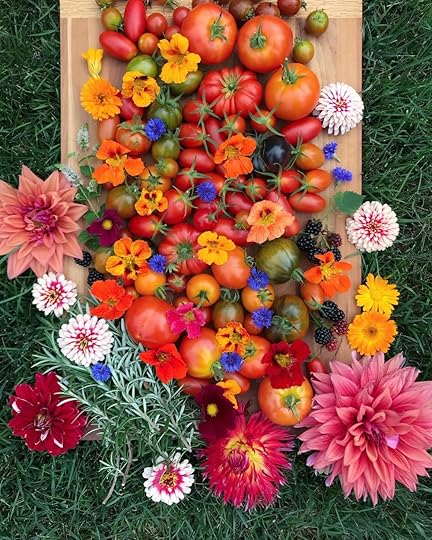
Like what you hear? Please share our podcast with a friend. Subscribe on iTunes or your favorite podcast player so you never miss a beat. And we'd really appreciate you showing us some love by leaving a rating and review on iTunes.
Have a topic you'd like see us dig in to? Leave us a note in the comment section below or #EBpodcast on Instagram and Twitter!
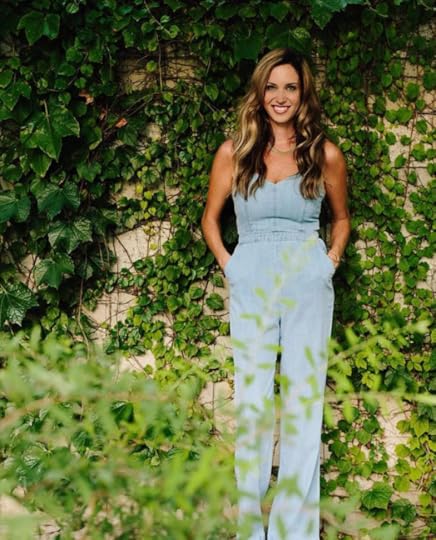
More about this weeks guest expert:
SARA GASBARRA is the founder and “lead garden girl” of Verdura, a full-service garden design company that cultivates culinary gardens for chefs, restaurants and hotels. She specializes in creating a season-long garden plan specifically tailored to the needs of a restaurant kitchen, sourcing unique and rare varieties of plants and vegetables, organic growing practices, custom designed irrigation systems, and urban farming in unconventional spaces.
Website: saragasbarra.com
Instagram: @saragasbarra
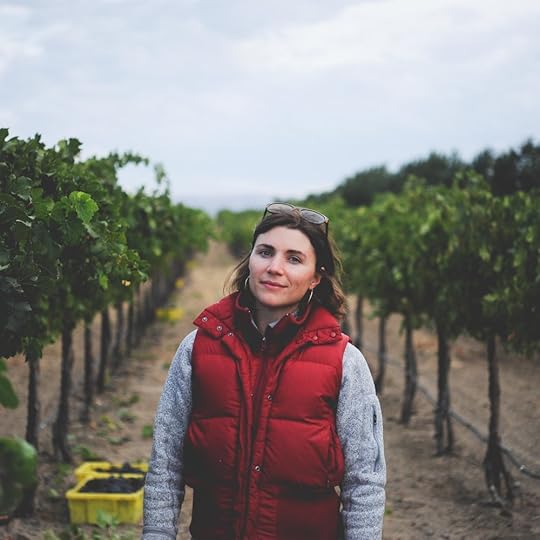
About the Host:
Hello, I’m Hilary Dahl. Outside of this podcast, my job is to help beginning and experienced growers create beautiful and productive gardens. I have the unique experience of working in on a wide range of projects, from small backyard garden plots to multi-acre vegetable farms. I also work in my own garden every day when I get home. This podcast is an opportunity to discuss seasonal garden topics and share the the joy of growing your own food.
April 12, 2019
Episode 100: Edible Flowers with Rosalind Creasy

A colorful mix of simple, edible flowers: nasturtiums and bachelor buttons
Hilary talks with legendary garden writer, Rosalind Creasy about the joys and perils of eating flowers.
HOW TO LISTEN:Subscribe in iTunes , Stitcher, or any of your favorite podcast players to have new episodes sent directly to your device.
Listen right now in your browser by clicking above.

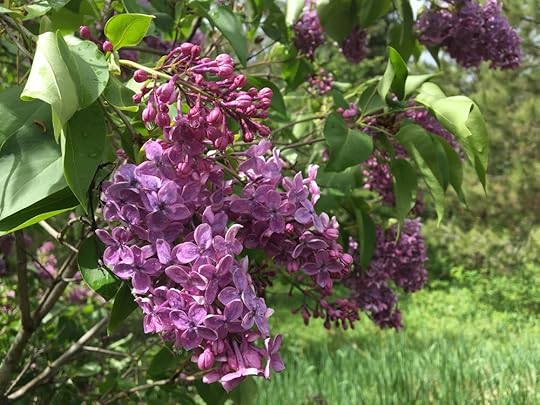

SHOW NOTES and TERMS:
Not all flowers are edible!!!
Tulips are edible, but all bulbs are treated with chemicals for transport. Only eat tulips that have been growing in your garden for two seasons.
Some vegetable plants, when left to bolt or flower, can be a great source of edible flowers. For many gardeners, allowing a few vegetable crops to flower may be the most accessible way to start growing edible flowers. Examples include:
Kale and broccoli
Mustards
Radishes
Arugula
Squash
Fennel
Peas
Some Edible Vegetable Flowers
Broccoli

Arugula

Squash Blossom

Cilantro
Examples of Edible Herb Flowers
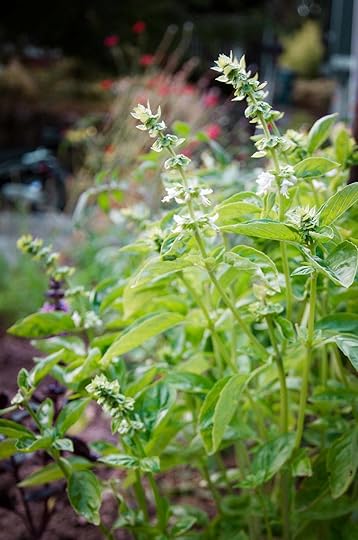
Basil

Dill

Garlic Chives

Chives
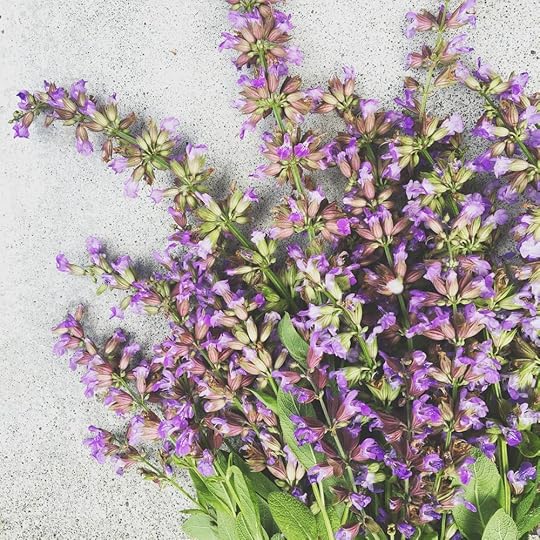
Sage

Thyme
Books By Rosalind and CAthy Barash:
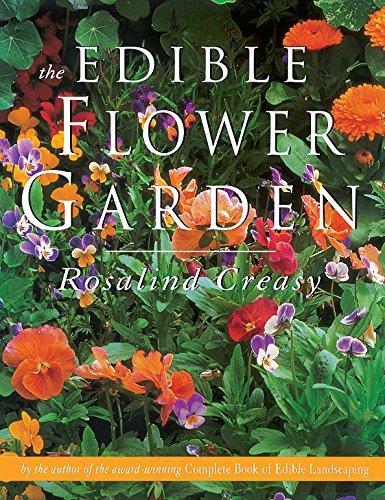
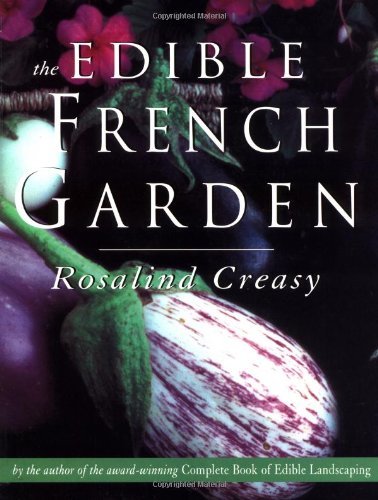
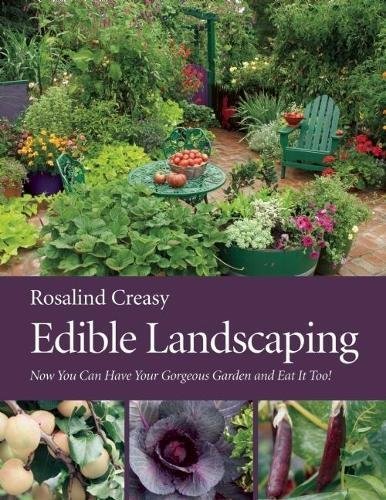
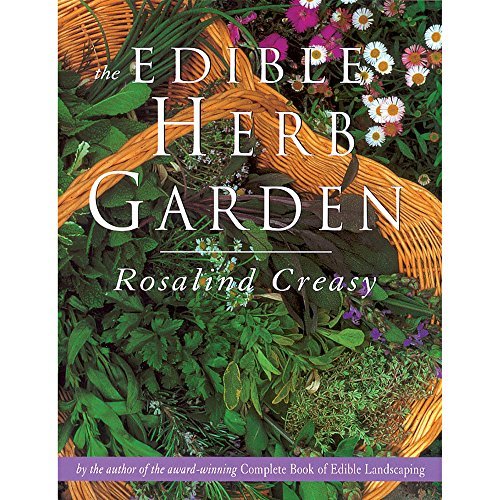

Like what you hear? Please share our podcast with a friend. Subscribe on iTunes or your favorite podcast player so you never miss a beat. And we'd really appreciate you showing us some love by leaving a rating and review on iTunes.
Have a topic you'd like see us dig in to? Leave us a note in the comment section below or #EBpodcast on Instagram and Twitter!

More about this weeks guest expert:
ROSALIND CREASY is an award-winning garden and food writer, photographer, and landscape designer with a passion for beautiful vegetables and fruits combined with the strong conviction that gardening should be an ecologically positive endeavor. Her first book, the bestselling "The Complete Book of Edible Landscaping," written in 1982, stood as the seminal book on the subject for more than 25 years. It was one of the first American landscaping books to advocate organic methods, encourage recycling, and provide alternatives to resource-wasting gardening techniques. It served to move edibles out of their former sheltered backyard existence into the prominence of the front yard. Since the book's publication, the term "edible landscaping" has become part of horticultural, architectural, and common jargon.

About the Host:
Hello, I’m Hilary Dahl. Outside of this podcast, my job is to help beginning and experienced growers create beautiful and productive gardens. I have the unique experience of working in on a wide range of projects, from small backyard garden plots to multi-acre vegetable farms. I also work in my own garden every day when I get home. This podcast is an opportunity to discuss seasonal garden topics and share the the joy of growing your own food.
April 5, 2019
Episode 99: Carrots and Parsnips with Colin McCrate
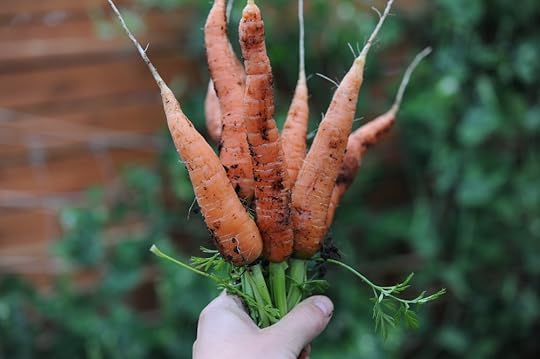
Nantes carrots
Hilary and Colin share everything you need to know to grow your best crop of carrots and parsnips yet!
HOW TO LISTEN:Subscribe in iTunes , Stitcher, or any of your favorite podcast players to have new episodes sent directly to your device.
Listen right now in your browser by clicking above.



SHOW NOTES and TERMS:
Umbelliferous: A term used to a flower shape relating to plants in the carrot family.
Apiaceae: The family of mostly aromatic flowering plants named after the type genus Apium. It is the 16th-largest family of flowering plants, and includes common garden crops such as caraway, carrot, celery, cilantro, dill, fennel, lovage, parsley, and parsnip.
Biennial: Carrots and parsnips are examples of crops that are, botanically speaking, actually biennials. This means that, if allowed to live a full life cycle, the plant would germinate and grow it’s leaves and stems the first season, overwinter, and then flower and set fruit or seed the second season.
Bolting: Bolting is a term that refers to the appearance of an undesired flower stalk on your vegetable plant. Bolting can result from stresses on the plant such as lack of water, excessive heat, or nutrient deficiencies. Once the flowering process is triggered, energy is diverted to the flower stalks and away from root production, resulting in a decreased yield.
Common pests: Carrot Rust Fly and Wire Worms (click beetle larvae)
Beneficial Nematodes: Nematodes are microscopic creatures that live in the soil and feed on insects. There are many types of nematodes, each targeting specific insects. Steinernema carpocapsae are used to control fly larva, and Heterorhabditis bacteriophora are known to help control beetle damage, so they may be good options for controlling carrot pests.
Recommended Varieties:
Carrots
Nantes
Yellowstone
Napoli
Nectar
Bolero
Parsnips
Andover
Javelin
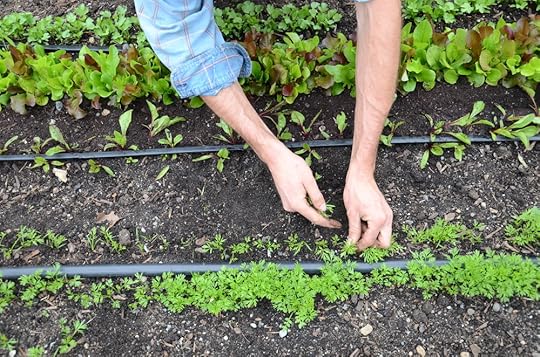

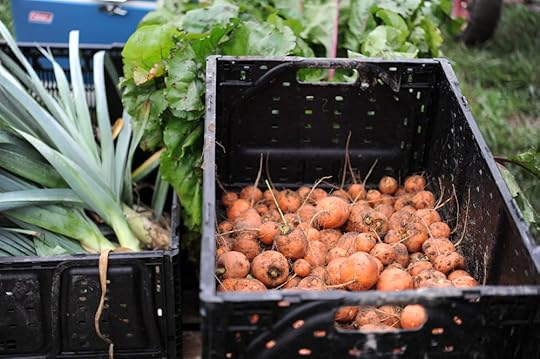
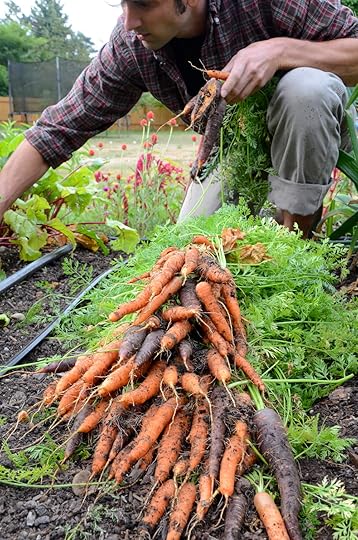
“Choosing the Right Carrot for Your Goals” from High Yield Vegetable Gardening

Books By Colin McCrate:

By Colin McCrate, Brad Halm

By Colin McCrate, Brad Halm
Like what you hear? Please share our podcast with a friend. Subscribe on iTunes or your favorite podcast player so you never miss a beat. And we'd really appreciate you showing us some love by leaving a rating and review on iTunes.
Have a topic you'd like see us dig in to? Leave us a note in the comment section below or #EBpodcast on Instagram and Twitter!

More about this weeks guest expert:
Colin McCrate is the founder of the Seattle Urban Farm Co. He has been growing food organically for over 15 years and has designed and has managed projects ranging from multi-acre farms to small backyard gardens. The author of two books; Food Grown Right, In Your Backyard (Mountaineers Books, 2012) and The High-Yield Garden Planner (Storey Publishing, 2015); and the Seattle Times garden writer. He believes that urban food production can help increase public awareness of environmental, health, and social issues.
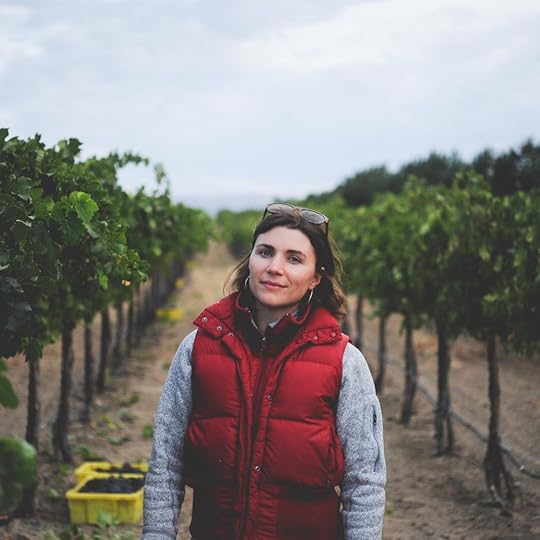
About the Host:
Hello, I’m Hilary Dahl. Outside of this podcast, my job is to help beginning and experienced growers create beautiful and productive gardens. I have the unique experience of working in on a wide range of projects, from small backyard garden plots to multi-acre vegetable farms. I also work in my own garden every day when I get home. This podcast is an opportunity to discuss seasonal garden topics and share the the joy of growing your own food.



